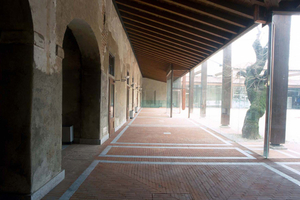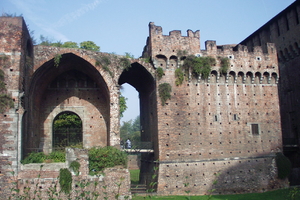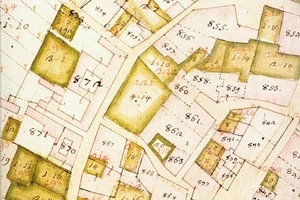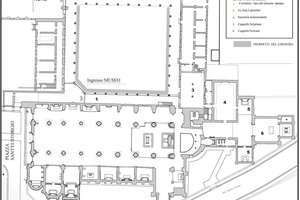'400 - '500
Restoration, on this website, is a wonderful occasion for the practical assessment on the fallout in the world of employment linked to a widely articulated world of activites, without sacrifying any scientific or cultural prerogative. Fundamental aspect (along with the restoration case histories) is to highlight the quality / potential of Milan as a city of art, through the works of restoration, for the most part of considerable historic architecture (and often involving unique decorations), performed over the last ten years. Actually, the completely unknown potential of Milan as a city of art emerge from the connections imposed every time you perform an architectural restoration. What can you say when running multiple restorations simultaneously concerning the architecture of '400 and '500? It's clear that the work of restoration involves primarily the action of knowing, or knowing in a brand new way, all the entrepreneurial satellite activities that are strictly connected.
It is now an opportunity to talk about restoration, right here in Milan, where the debate on this issue is absent since a long time, through meaningful interventions that spell out the obvious meanings of the restoration as a "rediscovery", but also showing all of its complicated aspects of impact on the work's world, finally becoming 'non-exclusively academic. Restoration as the fundamental transition element from a simple cultural value to the world of work, avoiding aspects of exclusive intellectual character.
Some restoration workshops in the fifteenth and sixteenth centuries provide a valuable starting point to reflect on both conservation and preservation of the city's monuments, in terms of degradation of monuments, in terms of methodology of intervention and, finally, also under the aspect of valorization of the territory.
If reconnected, information derived from the work-site, in its broadest conception (from the studies to the historical research, from chemical and material exams to static evaluations, up to the inevitable discoveries in the realization phase), becomes documentation for a material history and encourages us to provide important planning of reconstruction focused on an historical moment, examined through an unusual point of view.
At the same time "Milan in its Art Yards" can also offer important reflections on the organization of the contemporary business world.
Arch. Libero Corrieri
Commission for the Architectural and Landscape Heritage of Milan
Highlights

The first project for renovation and restoration of the architectural complex was prepared in 1983. Since dealing with a single long contract for the whole duration of the works was too demanding for the Municipality Administration, the operations were divided into four lots.
Read more »

L’Amministrazione comunale intende valorizzare il complesso castellano in vista di Expo 2015, migliorando la distribuzione e gli allestimenti...
Read more »

Unico resto ancora visibile della cinquecentesca cortina difensiva della città di Corbetta...
Read more »

Nell’ambito dei lavori di riqualificazione degli spazi parrocchiali per la creazione di un...
Read more »








